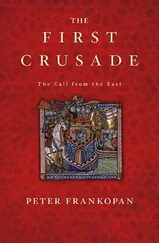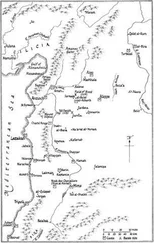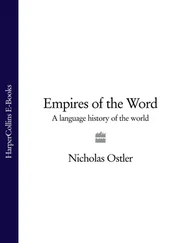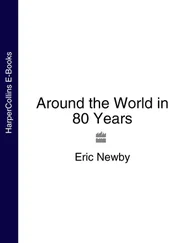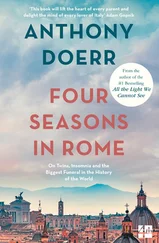China’s dealings with Persia became regular and intensive. Embassies were sent several times a year, notes one Chinese source, with at least ten missions heading for Persia, and even in quieter periods some five or six being dispatched west.95 Diplomatic envoys typically accompanied large caravans bringing goods for trading, which then returned home with products that were sought after at home—including Red Sea pearls, jade, lapis lazuli and consumables such as onions, cucumbers, coriander, pomegranates, pistachios and apricots.96 Highly desirable frankincense and myrrh, which in fact came from Yemen and Ethiopia, were known in China as Possu—that is, Persian goods.97 As we know from one later source, the peaches of Samarkand were considered immensely valuable: “as large as goose eggs” and with a famously rich colour to them, they were known in China as the “Golden Peaches.”98
Just as the Chinese had few direct dealings with Rome, the Mediterranean region’s knowledge of the world beyond the Himalayas and the Indian Ocean was limited, with a single Roman embassy attested as reaching the Emperor Huan around 166 AD. Rome’s interest in and knowledge of the Far East was fleeting; its eyes were fixed firmly on Persia.99 This was not just a rival and a competitor but a possible target in its own right. Even as control was still being established over Egypt, authors like Virgil and Propertius were talking excitedly of Roman influence being expanded. In a poem written to eulogise Augustus and his achievements, Horace wrote not of Roman domination of the Mediterranean, but of mastery of the entire world—including conquering the Indians and the Chinese.100 Doing so involved moving against Persia, and this became a common preoccupation of a succession of rulers. Grandiose plans were developed to push the empire’s frontier as far as the mountain pass known as the Caspian Gates deep inside Persian territory: Rome needed to control the heart of the world.101
In fact, efforts were made to turn these dreams into reality. In 113 the Emperor Trajan led an enormous expedition east in person. Advancing rapidly through the Caucasus before swinging south to follow the course of the Euphrates, he conquered Nisibis and Batnae, and minted coins which proclaimed that Mesopotamia had been “subjected to the power of the people of Rome.” With resistance melting away, the Emperor pressed on, splitting his forces into two. The great cities of the Persian Empire were taken in quick succession, with Adenystrae, Babylon, Seleucia and Ctesiphon falling into Roman hands after a brilliant campaign that lasted a matter of months. Coins were immediately issued, struck with the uncompromising legend “PERSIA CAPTA”—Persia has been conquered.102 Trajan then marched down to Charax, modern Basra, at the mouth of the Persian Gulf, arriving just as a merchant vessel set sail for India. He looked at the boat wistfully: if only he had been as young as Alexander the Great, he mused, he would have crossed to the Indus.103
With blueprints drawn up to establish new provinces of Assyria and Babylonia, Rome seemed poised to start a new chapter, one where the expansion of its frontiers would take it up to the Indus valley and as far as the gateway to China. But Trajan’s success proved short-lived: a fierce fightback was already under way in the cities of Mesopotamia before the Emperor suffered a cerebral oedema that killed him, while a revolt began in Judaea and spread quickly, requiring urgent attention. Nevertheless, successive rulers kept their focus firmly pinned on Persia: it was here that military expenditure was concentrated, and where the frontier, and what lay beyond, was reported with intense interest in Rome.
In sharp contrast with the empire’s European provinces, emperors campaigned regularly in Asia—although not always successfully. In 260 AD, for example, the Emperor Valerian was humiliated after being taken prisoner and held in “the abject form of slavery”: used as a human footstool for the Persian ruler “by bending his back to raise the king as he was about to mount his horse,” his body was eventually flayed “and his skin, stripped from the flesh, was dyed with vermilion, and placed in the temple of the gods of the barbarians, that the remembrance of a victory so signal might be perpetuated and that this spectacle might always be exhibited for our ambassadors.”104 He was stuffed so all could see the folly and shame of Rome.
Ironically, it was precisely the growth and ambition of Rome that helped galvanise Persia itself. For one thing, the latter benefited greatly from the long-distance traffic between east and west, which also served to effect a shift in Persia’s political and economic centre of gravity away from the north. Previously, the priority had been to be located close to the steppes in order to negotiate with the nomad tribes for livestock and horses, and to supervise the diplomatic contacts necessary to avoid unwelcome attention and demands from the fearsome peoples on the steppes. This was why oasis towns like Nisa, Abivard and Dara had become important, home to magnificent royal palaces.105
With central coffers boosted from tax and transit fees drawn from growing local and long-distance trade, major infrastructure projects were now embarked on. These included the transformation of Ctesiphon on the eastern bank of the Tigris in central Mesopotamia into a worthy new capital city, and also heavy investment in ports such as Characene on the Gulf to handle increasing volumes of maritime traffic, not all of which was destined for Rome: a thriving trade had built up in glazed pottery from Persia heading to both India and Sri Lanka during the first and second centuries.106
But the most significant effect of Rome’s military attention was that it prompted a political revolution. Faced with intense pressure from its neighbour, Persia underwent a major transformation. A new ruling dynasty, the Sasanians, emerged around 220 AD, offering a strident new vision, one which required the removal of authority from provincial governors, who had become independent in all but name, and the concentration of power at the centre. A series of administrative reforms saw a tightening of control over almost every aspect of the state: accountability was prioritised, with Persian officials issued with seals to record their decisions, to allow responsibility to be tracked and to ensure the accurate reporting of information. Many thousands of seals have survived to show just how far this reorganisation went.107
Merchants and markets found themselves being regulated, with one source recording how producers and traders—many arranged into guilds—were allocated specific areas in bazaars. This made it easier for inspectors to ensure that quality and quantity standards were met, and above all to collect tax duties efficiently.108 The focus on the urban environment, the location for most commercial exchange, extended to improving water-supply systems which in some cases were extended for several miles to increase available resources and provide scope for further urban growth. Countless new towns were founded, with a later Persian text that draws on contemporary material attesting to a boom in urban development throughout Central Asia, the Iranian plateau, Mesopotamia and the Near East.109
Large-scale irrigation programmes in Khuzistan and Iraq were undertaken as part of a deliberate attempt to boost agricultural production, which must also have had the effect of bringing down food prices.110 Archaeological finds show that packages were inspected prior to export, while textual material attests to copies of contracts being stamped and stored at registry offices.111 The incorporation of towns and territories that had been subject to the Kushan for the best part of two centuries back into Persia proper also allowed for an intensification of trade with the east.112
Читать дальше

